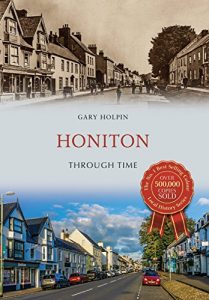The bustling market town of Honiton nestles on the southern banks of the River Otter in beautiful east Devon. In 1724 Daniel Defoe wrote, ‘Coming down the hill and to the entrance into Honiton, the view of the country is the most beautiful landscape in the world’. Made famous by its lace and pottery, Honiton’s history is linked to its position in the landscape, just west of where an ancient road from Exeter heads into the Blackdown Hills and onwards towards London.
Although Honiton has even more ancient origins, the town we see today was born around 1200 when the Earl of Devon laid out a classic medieval town, with narrow plots laid perpendicular to the Roman road that forms its long high street. Despite much of the town’s medieval past being lost to fire, ancient buildings such as St Margaret’s Chapel remain, as do some of its historic coaching inns such as the Dolphin Inn. These and many more highlights give fascinating glimpses into Honiton’s past.
Although Honiton has even more ancient origins, the town we see today was born around 1200 when the Earl of Devon laid out a classic medieval town, with narrow plots laid perpendicular to the Roman road that forms its long high street. Despite much of the town’s medieval past being lost to fire, ancient buildings such as St Margaret’s Chapel remain, as do some of its historic coaching inns such as the Dolphin Inn. These and many more highlights give fascinating glimpses into Honiton’s past.






